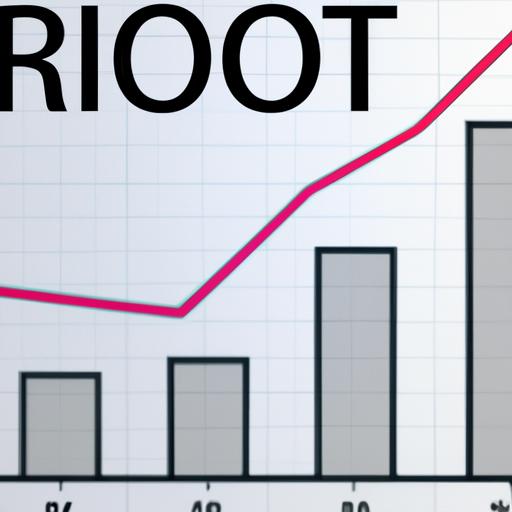As a business owner or marketer, you understand the importance of advertising in driving sales and generating revenue. However, not all advertising methods are created equal. In recent years, performance-based advertising has become increasingly popular due to its effectiveness in delivering results.
Performance-based advertising is a type of advertising where the advertiser pays for specific actions, such as clicks, leads, or sales. This payment model ensures that the advertiser only pays for actual results, making it a cost-effective way to advertise.
One performance-based advertising method that has been gaining traction is Pay Per Call. This advertising model allows the advertiser to pay for phone calls generated by their ads. In this article, we will explore why Pay Per Call is the future of performance-based advertising and how it can benefit your business.
The Concept of Pay Per Call Advertising

Pay Per Call advertising provides a greater return on investment compared to other performance-based advertising models.
Definition of Pay Per Call
Pay Per Call is a performance-based advertising model that allows advertisers to pay for phone calls generated by their ads. This model is particularly useful for businesses that rely on phone calls for sales, such as service-based businesses like plumbers or lawyers.
Unlike traditional advertising models, where the advertiser pays for clicks or impressions, Pay Per Call only charges the advertiser when a potential customer makes a phone call to the business after seeing their ad. This ensures that the advertiser only pays for actual leads.
How Pay Per Call Works
Pay Per Call works by placing phone numbers in ads that are trackable by the advertiser. When a potential customer sees the ad and decides to call the business, the call is routed through a tracking number that records the call data, such as the time and duration of the call.
The advertiser can then use this data to measure the effectiveness of their ad campaign, optimize their targeting and messaging, and improve their ROThis level of data granularity allows businesses to make informed decisions about their advertising spend and ensure they are getting the best value for their money.
Advantages of Pay Per Call Advertising
One of the biggest advantages of Pay Per Call advertising is the quality of leads generated. Since potential customers are actively calling the business, they are often more interested and engaged, resulting in higher conversion rates.
Additionally, Pay Per Call allows for more personal and direct communication between the business and the customer, which can help build trust and establish a relationship. This can lead to more repeat business and word-of-mouth referrals.
Overall, Pay Per Call is a powerful advertising tool that can help businesses of all sizes drive sales and generate revenue.
Pay Per Call Advertising vs. Other Performance-Based Advertising Models

Pay Per Call advertising offers a more direct and personalized approach to lead generation.
When it comes to performance-based advertising, there are several payment models to choose from. Pay Per Call is just one of them, and it’s important to understand how it compares to other methods. In this section, we will compare Pay Per Call advertising to other popular performance-based advertising models.
A. Comparison with Pay Per Click
Pay Per Click (PPC) is a popular advertising model where the advertiser pays when a user clicks on their ad. While PPC can be effective in driving traffic to a website, it has its limitations. With PPC, the advertiser has no control over the quality of the clicks they receive. Clicks may come from users who have no intention of purchasing, resulting in wasted ad spend.
In contrast, Pay Per Call advertising allows the advertiser to pay for phone calls generated by their ads. This means that the advertiser only pays for leads that are highly interested in their product or service, resulting in a higher return on investment.
B. Comparison with Cost Per Acquisition
Cost Per Acquisition (CPA) is an advertising model where the advertiser pays for a specific action, such as a sale or lead. While CPA can be effective in driving sales, it can also be expensive. Advertisers may end up paying a high cost per lead or sale, which can eat into their profits.
With Pay Per Call advertising, advertisers only pay for phone calls generated by their ads. This means that they can control their ad spend and ensure that they are only paying for high-quality leads. In the long run, this can result in a greater return on investment.
C. Comparison with Cost Per Lead
Cost Per Lead (CPL) is an advertising model where the advertiser pays for a lead generated by their ad. While CPL can be effective in generating leads, it has its limitations. Advertisers may end up paying for low-quality leads that are unlikely to convert, resulting in wasted ad spend.
With Pay Per Call advertising, advertisers only pay for phone calls generated by their ads. This ensures that they are only paying for high-quality leads that are highly interested in their product or service. As a result, Pay Per Call can be a more cost-effective way to generate leads than CPL.
The Future of Performance-Based Advertising

The growth of Pay Per Call advertising highlights the importance of adapting to new trends in advertising.
As technology advances, so do advertising methods. The advertising industry is constantly evolving, and businesses must adapt to keep up with the latest trends. One trend that has been steadily growing in recent years is the use of Pay Per Call advertising.
A. Current trends in advertising
In the past, traditional advertising methods like print and TV ads were the norm. However, with the rise of the internet and social media, digital advertising has become increasingly popular. Digital advertising allows for more precise targeting and measurement, making it a more cost-effective way to advertise.
B. The growth of Pay Per Call advertising
Pay Per Call advertising has been gaining popularity in recent years due to its effectiveness in delivering results. According to a study by BIA/Kelsey, Pay Per Call spending in the US is expected to reach $16.3 billion by 2022. This growth is due to the increasing number of consumers who prefer to call businesses instead of filling out online forms.
C. Why Pay Per Call is the future of performance-based advertising
Pay Per Call advertising offers several advantages over other performance-based advertising models. It allows businesses to target consumers who are ready to make a purchase, resulting in higher quality leads and improved conversion rates. Additionally, Pay Per Call advertising provides a greater return on investment since businesses only pay for actual phone calls.
As more businesses realize the benefits of Pay Per Call advertising, it is expected to become an even more popular advertising method in the future. By incorporating Pay Per Call into your advertising strategy, you can stay ahead of the curve and reach consumers in a more effective way.
Conclusion
In conclusion, Pay Per Call is an effective and efficient way to advertise your business. With the ability to pay only for actual phone calls generated by your ads, Pay Per Call provides a cost-effective solution for businesses of all sizes.
By using Pay Per Call advertising, you can increase lead quality, improve conversion rates, and achieve a greater return on investment. With its many benefits, it’s no wonder that Pay Per Call is quickly becoming the future of performance-based advertising.
If you’re looking for a way to boost your business’s advertising efforts, consider incorporating Pay Per Call into your strategy. With the potential for high-quality leads and a strong return on investment, Pay Per Call could be just what your business needs to succeed in today’s competitive market.